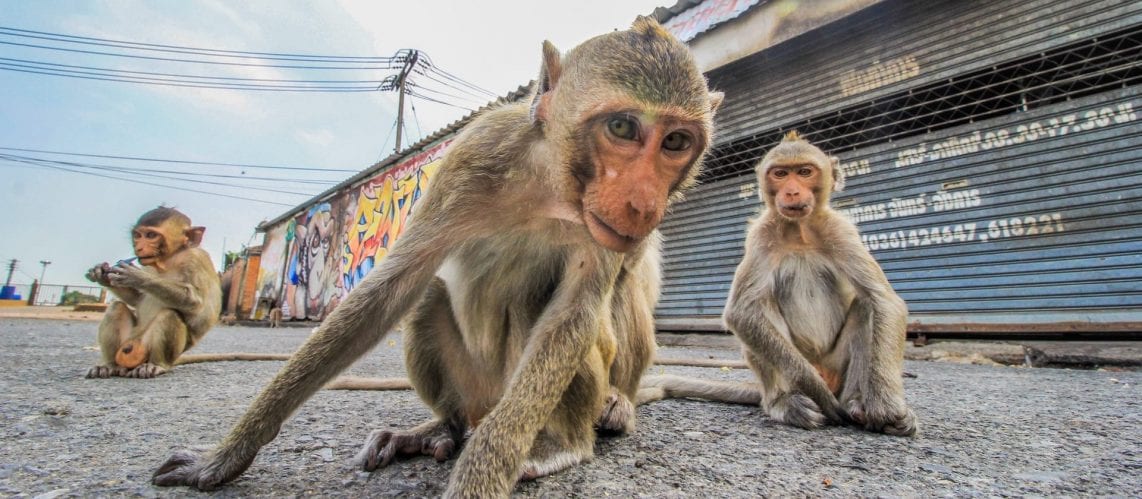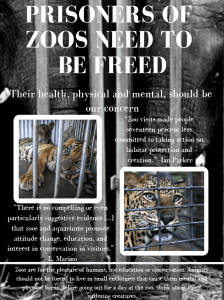This digital communication project shows the truth to what zoos mean and represent. Although zoos state they provide education and conservation efforts, this is not correct. The infographic will give the truth behind the bars of zoos. Join national organizations and individuals taking action to help these prisoners become free.
The Fate of the Amazon
This infographic seeks to aid in bridging the gap between humans, the environment, and animals through the Amazon rainforest. The Amazon is home to a vast array of species, whose habitat is quickly depleting because of deforestation by humans for a variety of reasons. The relationship between humans and the environment often has a heavy… Read more The Fate of the Amazon
The Potential of Computer Science in Supporting Animal Rights
The following website is about some of the applications of computer science in animal rights and wildlife conservation. As WPI students, we actively look for avenues to apply our learning to novel areas, and this is one such example. Learn more about how new developments in computer science are capable of supporting animal rights movements… Read more The Potential of Computer Science in Supporting Animal Rights
Zoo Animals or Prisoners?
More on free-ranging dogs
Here two films addressing the issue of free-ranging dogs in Latin America Lost Dogs -Trailer (Chile) Netflix Documentary “Dogs” Episode: Territorio de Zaguates (Costa Rica) And a New York Times Article:
The Canine Conundrum
Home, C., et al. “Canine Conundrum: Domestic Dogs as an Invasive Species and Their Impacts on Wildlife in India.” Animal Conservation, vol. 21, no. 4, 2017, pp. 275–282., doi:10.1111/acv.12389. About the Author: Chandrima Home, the author referenced in both the publications, is a PhD student at the Ashoka Trust for Research in Ecology and… Read more The Canine Conundrum
A Mammoth’s Medieval History
Group Report By: Brittany Jette, Giahuy Lenguyen, Kaustubh Pandit, Rachael Zmich Shapiro, Beth. How to Clone a Mammoth: The Science of De-Extinction. Princeton University Press. Beth Shapiro is an evolutionary molecular biologist who teaches at the University of California. She is a professor in the Department of Ecology & Evolutionary Biology and specializes in… Read more A Mammoth’s Medieval History
Human Companions: The Shift From Wildlife to Domestication
Human Companions: The Shift From Wildlife to Domestication Twardek, William & Peiman, Kathryn & Gallagher, Austin & Cooke, Steven. (2017). Fido, Fluffy, and wildlife conservation: The environmental consequences of domesticated animals. Environmental Reviews. 25. 10.1139/er-2016-0111. William Twardek is a very experienced individual in the field of animal research, with a concentration in ocean… Read more Human Companions: The Shift From Wildlife to Domestication
The Reciprocity of Human-Animal Influence Throughout History
Written by: Achu Balasubramanian, Saniya Syeda, Mackenzie Warren, Claire Lungwitz Ritvo, Harriet. “Animal Planet.” Environmental History, vol. 9, no. 2, 2004, pp. 204–220., doi:10.2307/3986084. Compared to: Singer, P. 1975. Animal Liberation. HarperCollins. [Preface and Chapter 1: All Animals Are Equal] The author of Animal Planet, Dr. Harriet Ritvo, is a historian who studies and teaches courses… Read more The Reciprocity of Human-Animal Influence Throughout History

